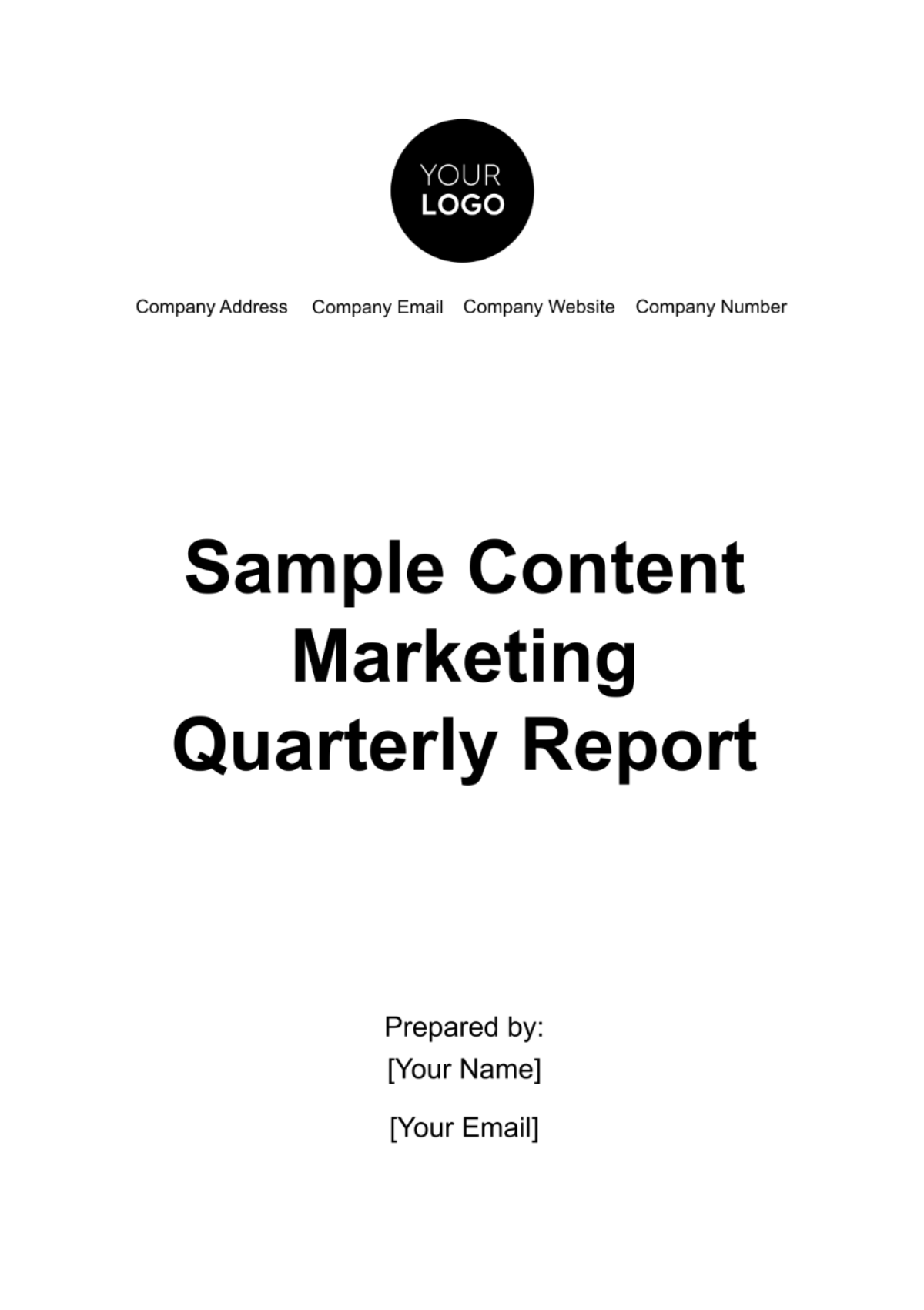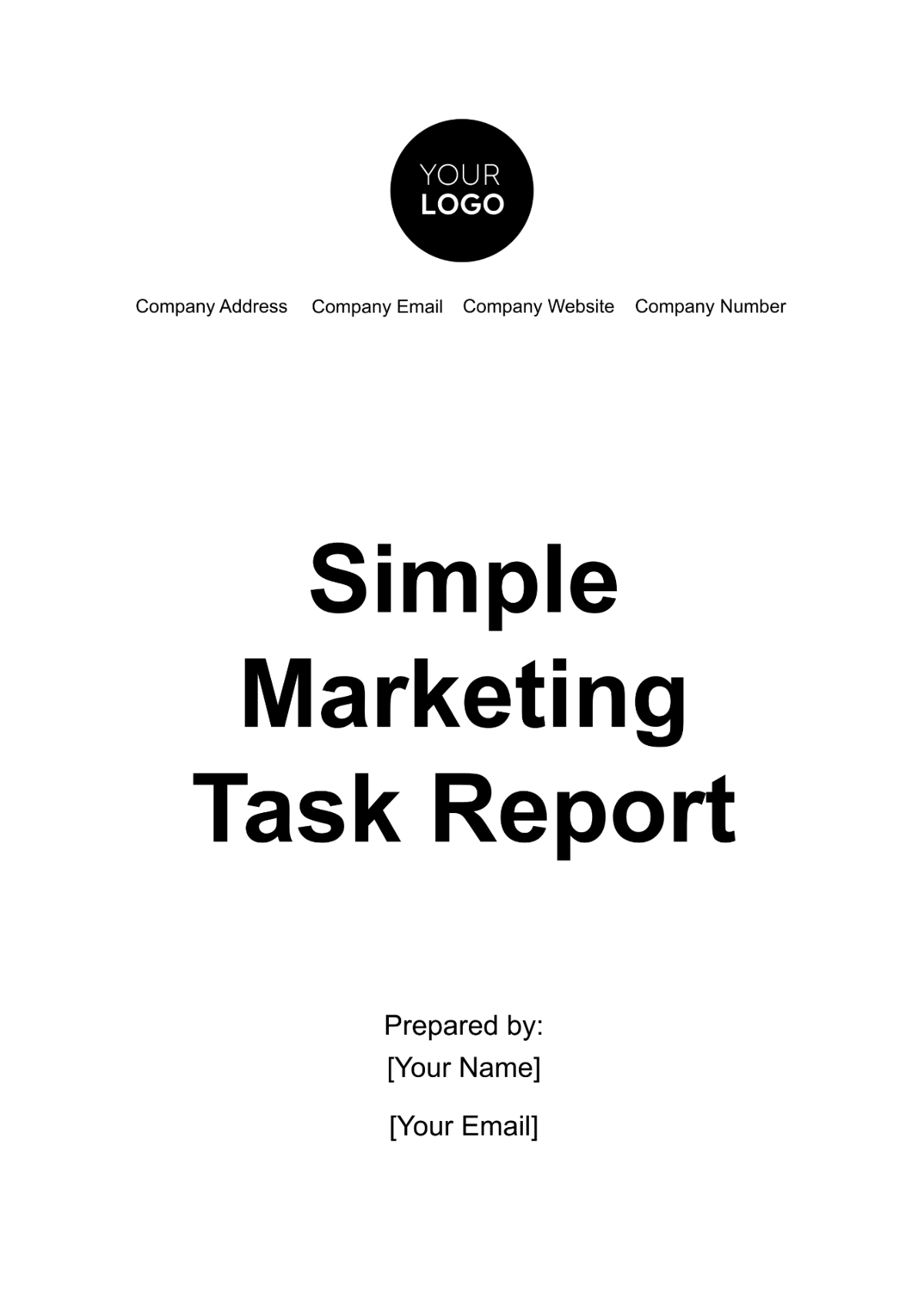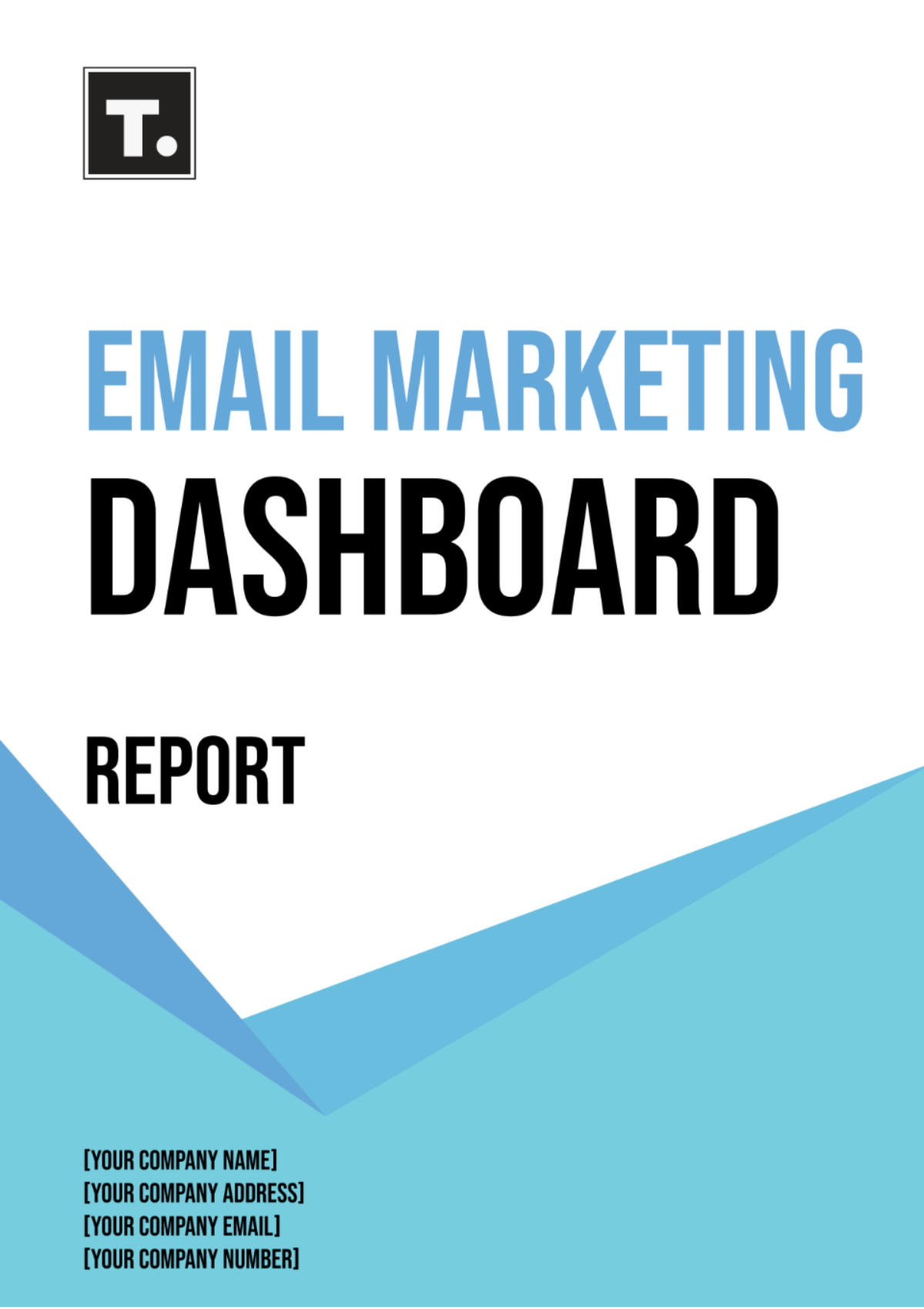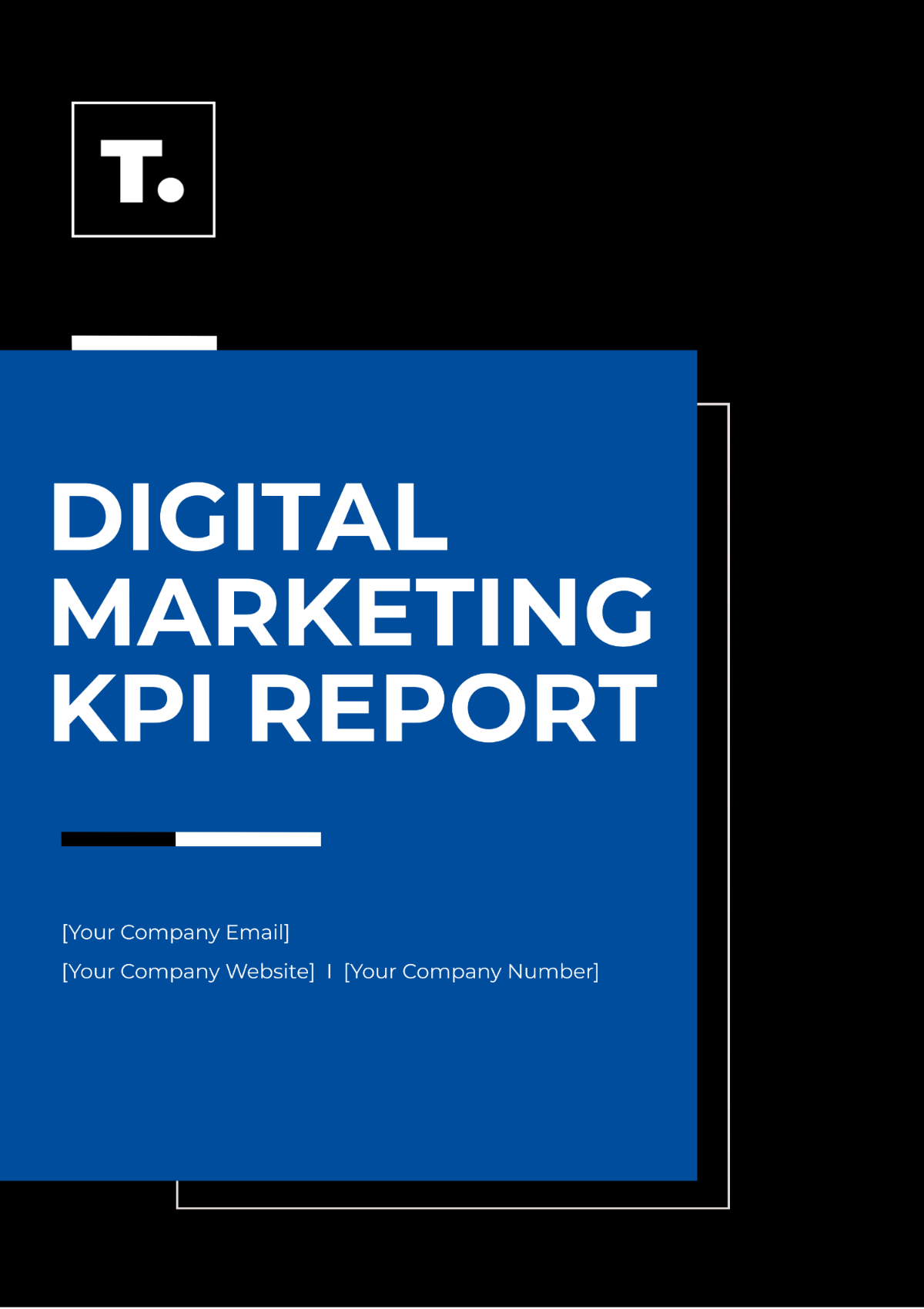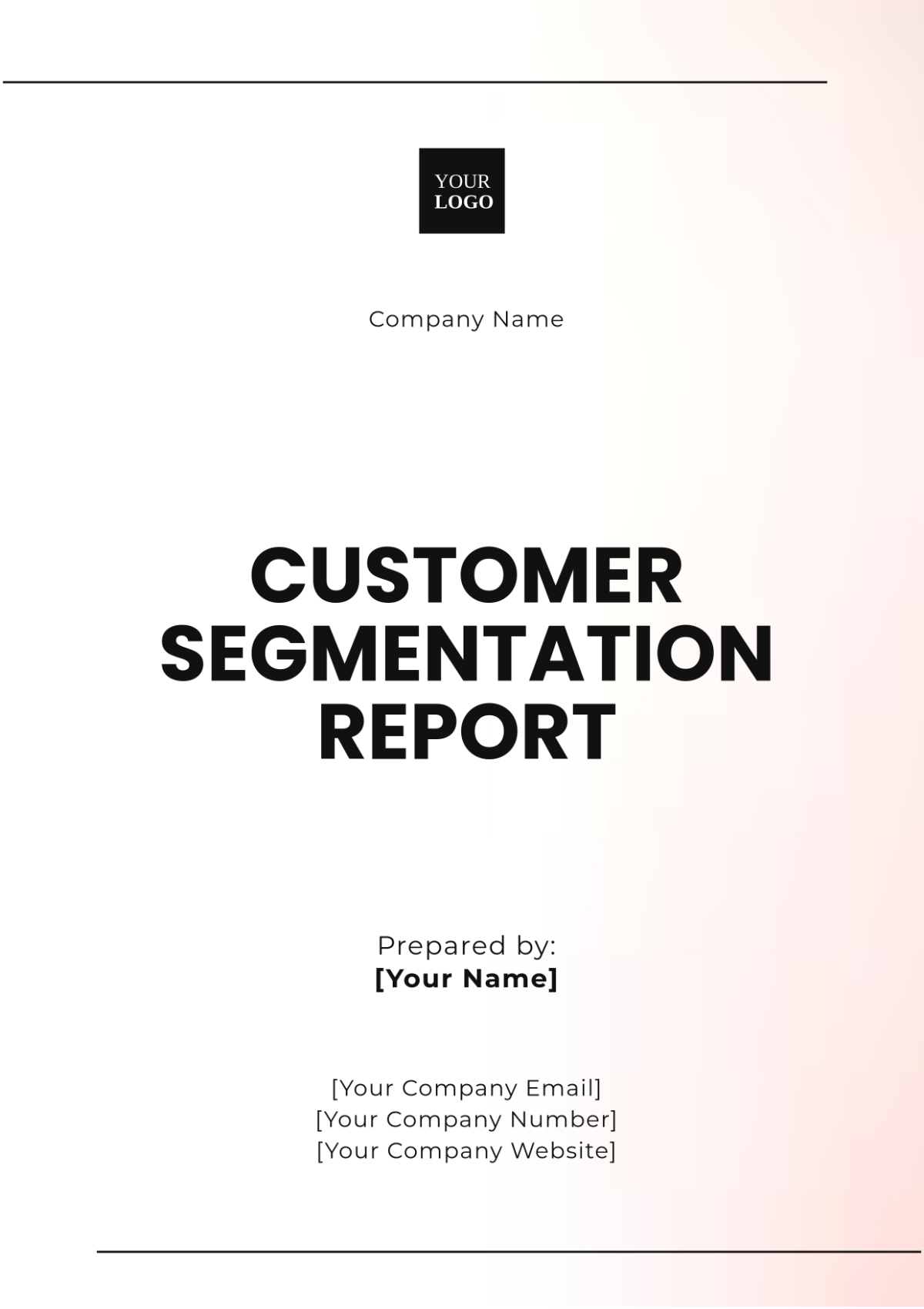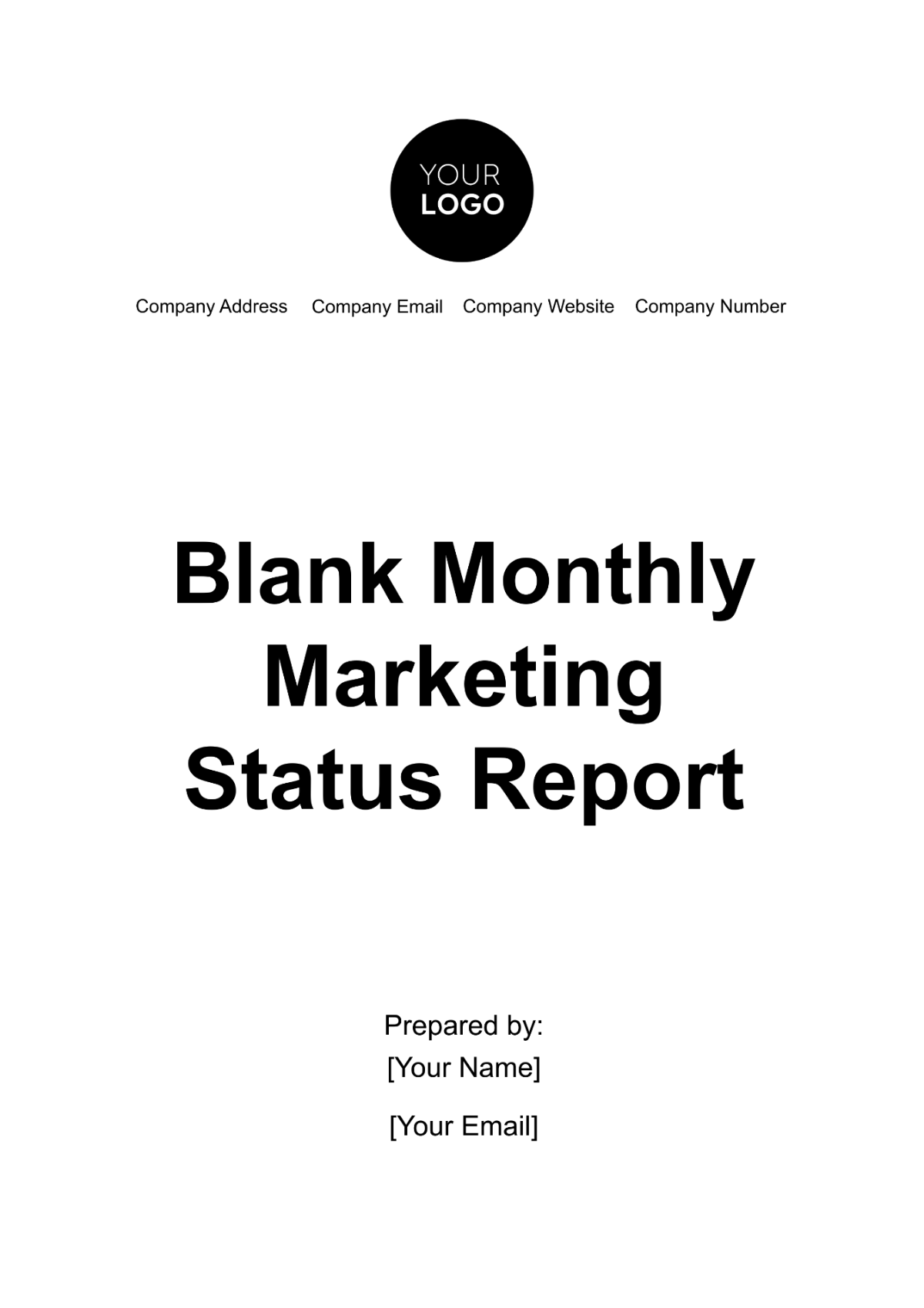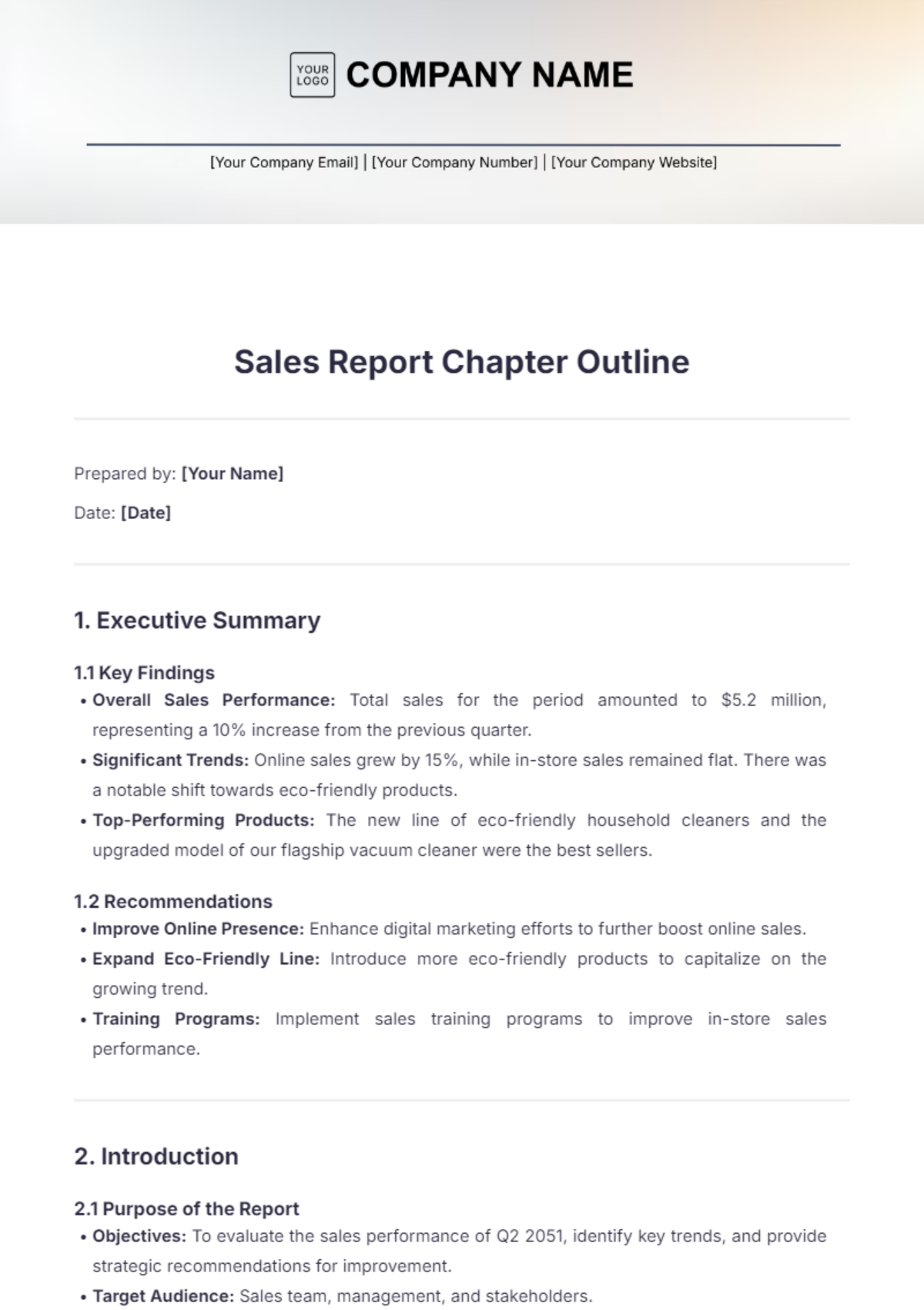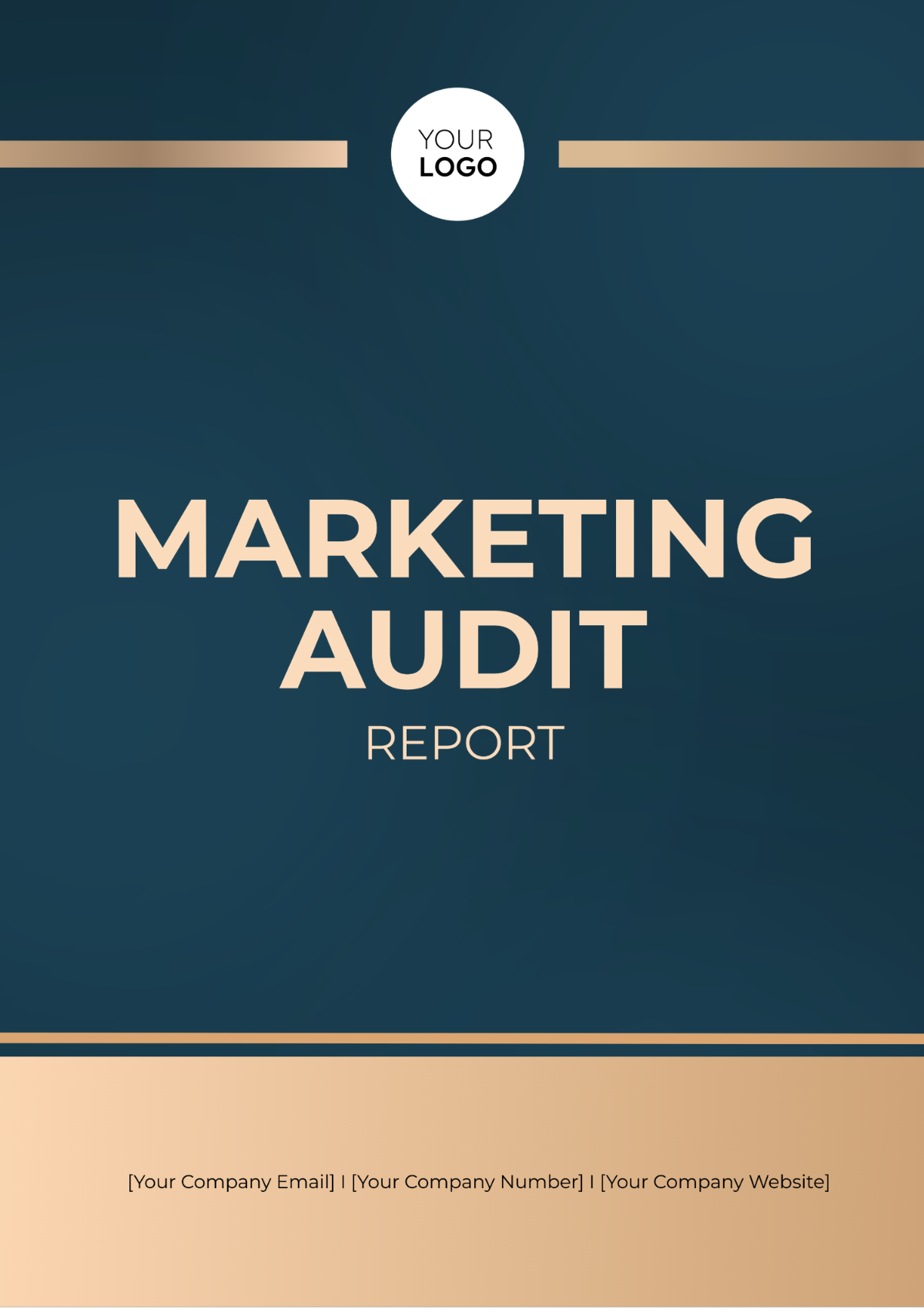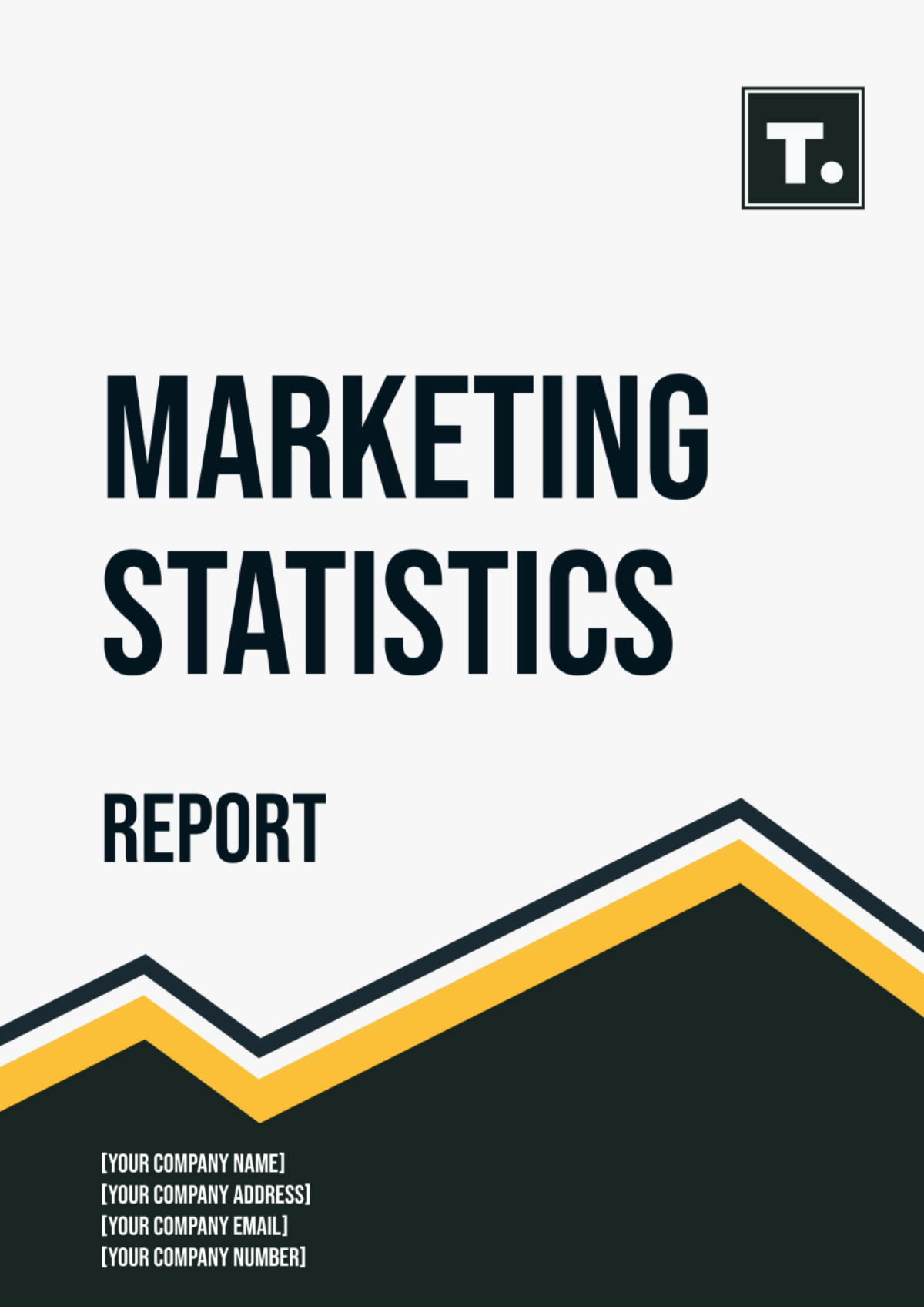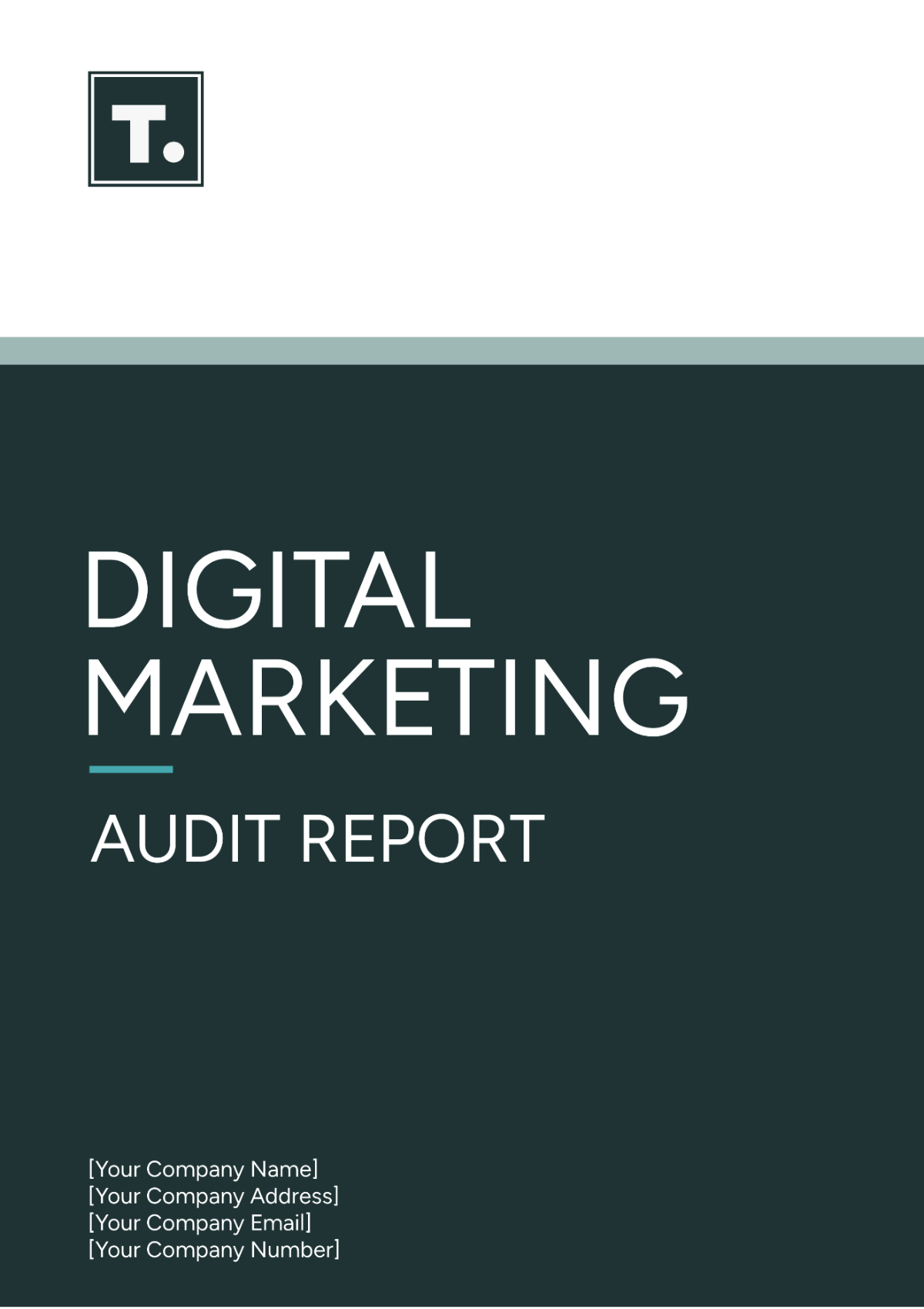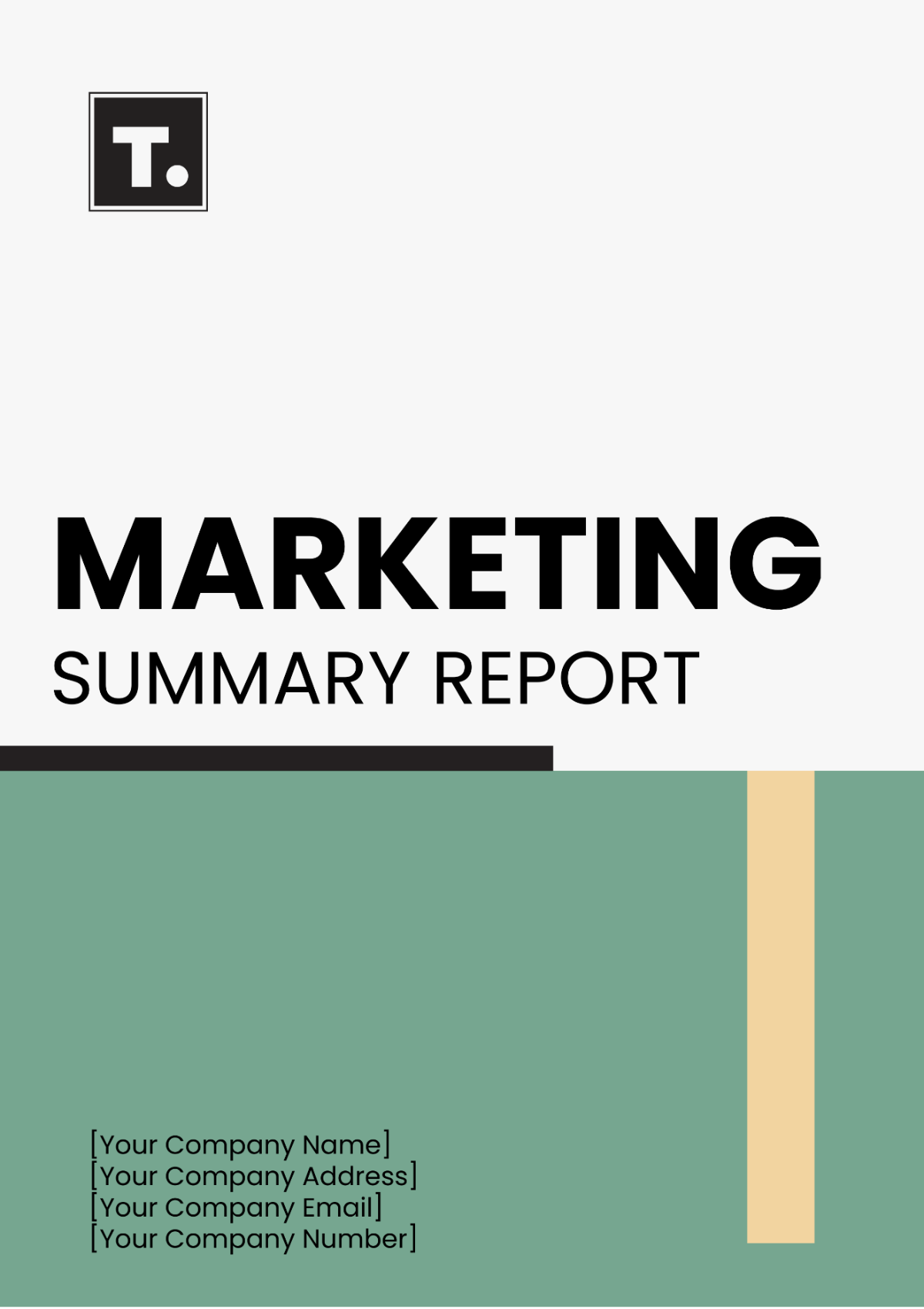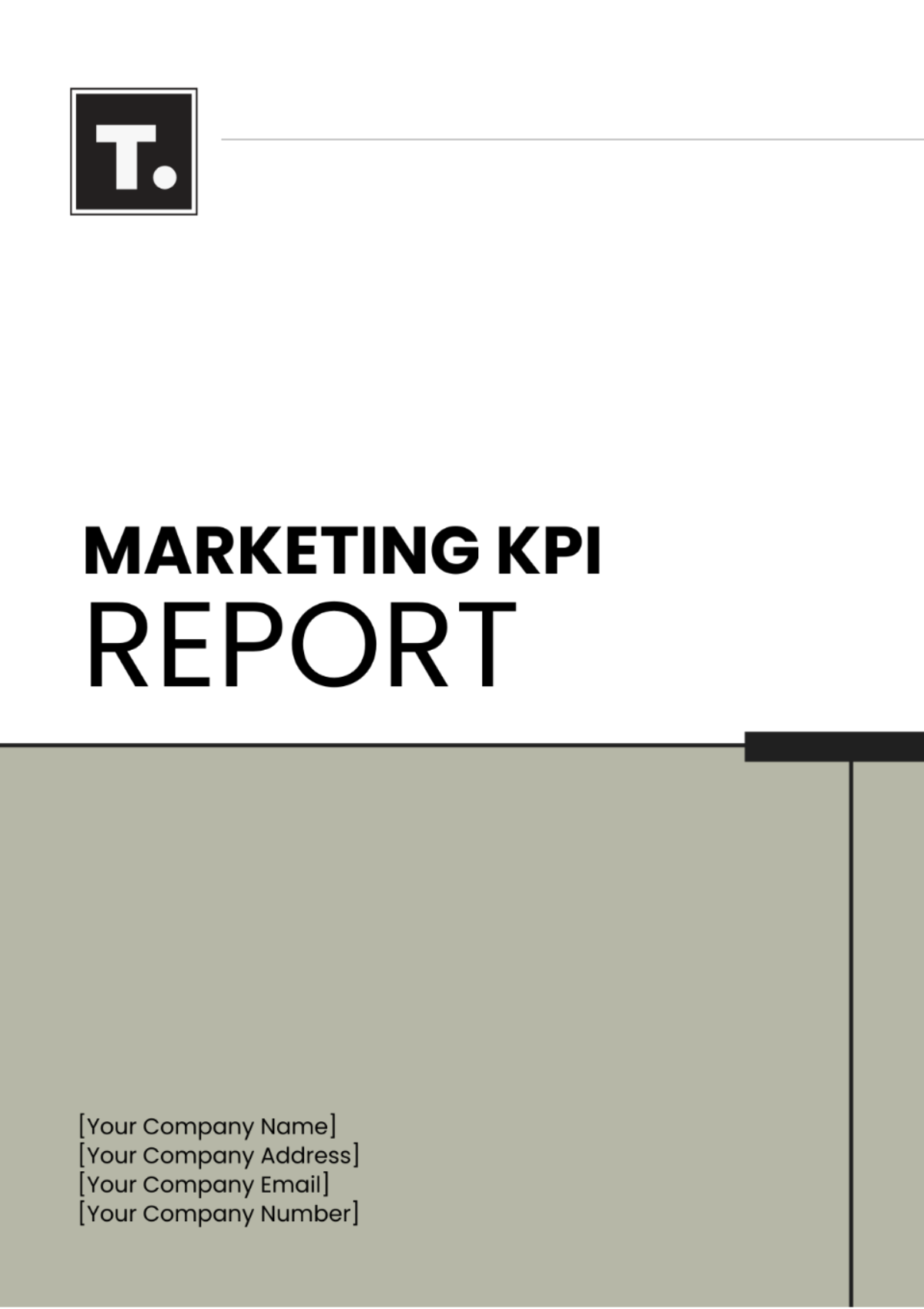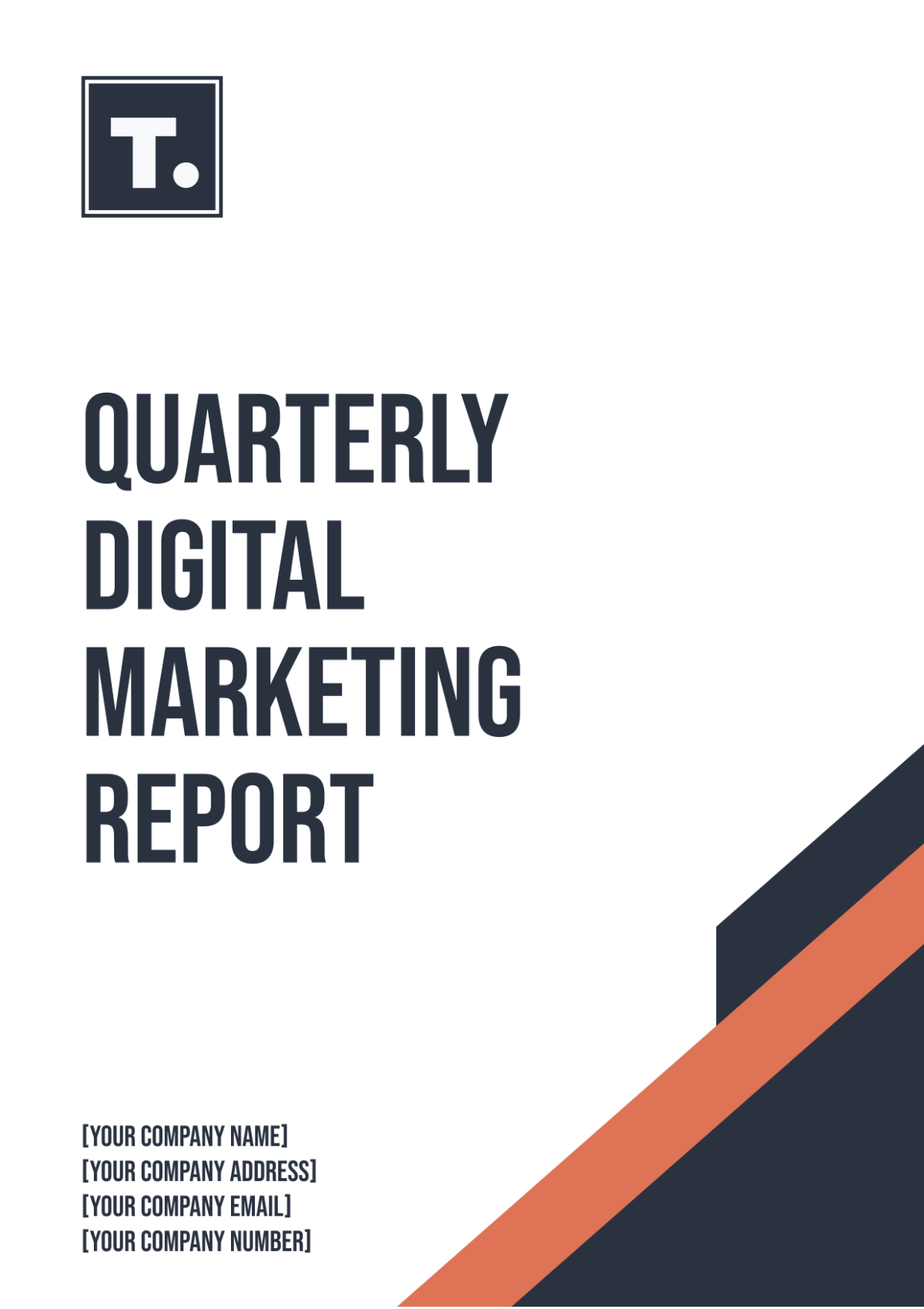Blank Monthly Marketing Status Report
I. Introduction
A. Purpose
(State the purpose of the report. Explain why the monthly marketing status report is created and how it helps in understanding the marketing performance.)
B. Scope
(Describe the scope of the report. Outline the areas of marketing the report will cover, such as digital marketing, traditional marketing, social media, and other relevant channels.)
II. Executive Summary
(Provide a brief overview of the overall marketing performance. Include the major campaigns carried out, standout successes, and any significant deviations from the plan. Mention any overall trends, the total reach, and general impact of the marketing efforts.)
III. Marketing Objectives and Goals
A. Monthly Goals
(Detail the specific marketing goals set at the beginning of the month. Include both qualitative and quantitative goals.)
B. Progress towards Goals
(Discuss the progress made towards achieving the monthly goals. Highlight goals that were met, exceeded, or missed, and explain the reasons behind these outcomes.)
IV. Digital Marketing
A. Website Analytics
(Present website performance metrics such as total visits, unique visitors, bounce rates, and average session duration.)
Metric | Value |
|---|---|
[Total Visits] | [10,000] |
B. Social Media Performance
(Analyze the performance metrics for various social media platforms. Include reach, engagement, follower growth, and mentions.)
Platform | Reach | Engagement | Follower Growth | Mentions |
|---|---|---|---|---|
[Instagram] | [30,000] | [3,000] | [150] | [120] |
C. Email Marketing
(Provide metrics on email marketing campaigns, such as open rates, click-through rates, and conversions.)
Metric | Value |
|---|---|
[Click-Through Rate] | [10]% |
V. Traditional Marketing
A. Print Media
(Discuss the performance and impact of any print media campaigns, such as magazine advertisements and flyers. Include distribution reach and feedback received, if any.)
B. Broadcast Media
(Describe any radio or TV advertisements that were executed. Include listener or viewer reach numbers and any tracked results, such as follow-up inquiries or sales.)
C. Outdoor Advertising
(Provide insights into outdoor advertising campaigns like billboards and transit ads. Mention the locations, duration, reach estimates, and any measurable impact.)
VI. Campaign Analysis
A. Current Month’s Campaigns
(List and describe the specific campaigns that were active during the month. Include objectives, target audience, channels used, and key performance indicators.)
B. Performance Metrics
(Present the performance metrics of these campaigns. Include details such as reach, engagement, conversion rates, and return on investment.)
Campaign | Reach | Engagement | Conversion Rate | ROI |
|---|---|---|---|---|
[Year-End Sale] | [15,000] | [1,500] | [7]% | [150]% |
C. Lessons Learned
(Discuss the insights gained from the current month's campaigns. Include what worked well, what didn't, and how these lessons will be applied to future campaigns.)
VII. Marketing Budget
(Detail the distribution of the marketing budget across different channels and campaigns. Analyze the actual expenditure versus the allocated budget. Highlight any discrepancies and provide explanations for over or under-spending.)
Channel | Budgeted Amount | Actual Spend | Variance |
|---|---|---|---|
[Print Media] | [$5,000] | [$5,700] | [$300] |
VIII. Competitive Analysis
A. Competitor Activities
(Describe the key marketing activities of major competitors. Include any new campaigns, promotions, and strategic moves observed during the month.)
B. Market Position
(Analyze your brand's current position in the market relative to competitors. Include market share insights and any shifts in brand perception noted.)
IX. Upcoming Plans
A. Next Month's Objectives
(Outline the marketing objectives for the following month. Ensure these objectives are specific, measurable, achievable, relevant, and time-bound [SMART].)
B. Planned Campaigns
(List and briefly describe the campaigns planned for the next month. Include the target audience and channels to be used.)
Campaign | Description | Target Audience | Channels |
|---|---|---|---|
[New Product Awareness Drive] | [Launch a multimedia campaign to raise awareness of the new product] | [Existing and new customers] | [Online ads, email, social media] |
C. Resource Allocation
(Provide insights into the resources needed for next month's campaigns. Include human resources, budget, and any external partnerships or tools required.)
Resource Type | Details | Allocation |
|---|---|---|
[Human Resources] | [Marketing team members, content creator, social media managers] | [5 team members allocated for campaign tasks] |
X. Conclusion
(Summarize the key points from the report. Highlight the main successes, areas for improvement, and the overall outlook for future marketing activities.)









